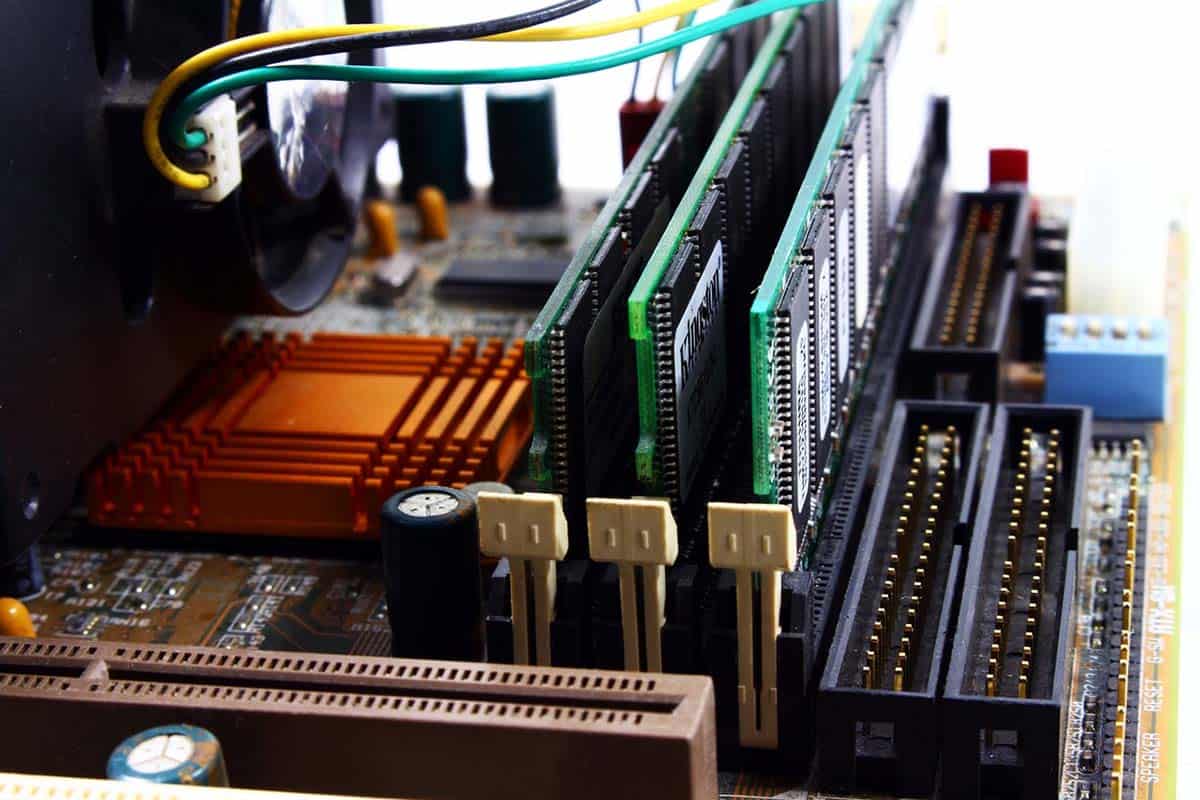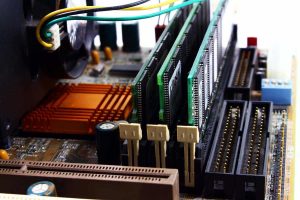Is mixing RAM brands a good idea? Let’s assume you have one or two RAM kits kept in your locker. And since you’re on a budget, you’re considering slotting that old RAM into your new computer.
The only thing stopping you right now is that both RAM kits are from different brands. And you feel that having both RAM kits in the same computer might be the dumbest thing you have ever done up until this point.
Honestly, you’re not alone. Most people have similar challenges and are confused about what to do.
Luckily, since you’re here, you will get in-depth information to make an informed decision about mixing RAM brands.
Are you ready? Alright, back to the big question:
Can You Mix Ram Brands Without Experiencing Any Issue?
Yes, you can. Forget the myth that says you can’t. However, it’s highly recommended you use RAM kits with equal speed, size, voltage, CAS Latency, controller and brand. But that doesn’t mean you can’t use RAM sticks from different brands.
Another reason many are against using RAM kits from different brands is because of quality issues. The material used by both brands might be different. And that would result in the quality being different too.
So, you can mix RAM brands on your computer or PC. But if you want your computer to deliver optimal performance, you shouldn’t make such moves.
So, here’s the bottom line. If you’re an avid gamer, you shouldn’t use different RAM brands together. But for lighter tasks like surfing the internet where higher RAM kits are overkill, you can mix RAM brands if you want.
Continue reading for more must-know information about mixing RAM brands.
Mixing RAM Brands: Does RAM Type Count?
The RAM types available are the DDR1, DDR2, DDR3, DDR4, and the DDR5, which is the latest release. DDR also means Double Data Rate.
Each generation denotes the RAM types, and DDR4 is actually one step higher than DDR3. And yes, RAM type matters a great deal when it comes to combining RAM brands. If the RAM doesn’t fit into the motherboard slot, then it’s a big waste of time and energy.
So, you can’t and shouldn’t try fitting a DDR2 into a DDR3 slot on your PC’s motherboard. It doesn’t matter if they are of the same brand or not. If a RAM kit doesn’t fit into your PC or computer’s motherboard, how then will it work or deliver optimal performance?
Mixing RAM Brands: Does RAM Speed Matter?
From experience, speed doesn’t matter that much when mixing two or more RAM brands. But that doesn’t mean you should turn a blind eye. Higher speed means your computer would respond faster, and it can handle anything thrown at it.
So, why should you be concerned a bit about RAM speed? The answer is simple.
There’s a famous saying that a chain can only be as strong as its weaker link. That also happens when you mix two RAM sticks with varying speeds. That is combining a DDR4 2400 MHz RAM with a DDR4 2600 RAM.
Even if the difference between the RAM kits’ speeds is wider, you can still have both on the computer. And they would work fine.
However, motherboards enjoy working with RAM kits with equal speed levels. So, expect your motherboard to underclock the faster RAM. But if you feel like having a higher speed will be more beneficial, you can consider overclocking the other RAM sticks.
A Handy Tip: Before you overclock, ensure that your PC, or computer system, has an effective CPU cooler to keep the temperature under control. Remember that overheating can damage a system in the blink of an eye.
Mixing RAM Brands: Does Voltage Matter?
Combining different RAM sticks is a lot more complicated than the tech guy next door makes it look. A RAM boasts varied components that come together to make it work as it’s supposed to. Therefore, when mixing brands, you need to consider those features.
The voltage is one of the features you need to consider when you mix RAM brands. Do they have the same voltage? If they do, then fine. But if they don’t, fine as well. Your computer will find a way to deliver acceptable performance with RAM sticks that have varying voltage levels.
So, yes, voltage counts. But it won’t prevent you from combining RAM brands. When you mix RAM brands with different voltage, your motherboard will run with the lowest one by default.
But don’t worry; it’s not a cause for concern. Your computer will work smoothly with RAM brands that boast different voltage.
Mixing RAM Brands: Do CAS Latency and Timings Matter?
CAS Latency (CL) means Column Address Strobe. What does it mean? It refers to the time a RAM is supposed to return stored data to a CPU.
As far as PC performance is concerned, lower CAS Latency is much better. A RAM brand with lower latency would operate much faster.
So, can you mix RAM brands with different CAS latency?
Ideally, it isn’t recommended that you do such. But that doesn’t mean it’s impossible. And the same goes for timings.
If you know your way around your PC’s BIOS setting, you can mess around and get mixed RAM brands with varied CAS latency, timings, and even voltage to work smoothly together.
But to be frank, this process can be time-consuming and stressful. There’s also a chance that you might only get it right after trying multiple times.
So, if you have the patience and know your way around your PC’s BIOS settings, then you’re free to combine RAM brands. But if you don’t, you can learn how and make your computer work or go for RAM kit of the same brand.
But really, it’s not worth your time, and energy, given how budget-friendly RAM kits are nowadays.
Mixing RAM Brands: Does Memory Size Matter?
Most computers and PCs out there boast two RAM slots, and some have more. So, you can add as many RAM sticks, as you want to optimize your device’s performance.
However, the prevailing misconception people have about mixing RAM brands with different memory sizes is overwhelming. So, here’s the question to clear the air.
Can you mix RAM brands with different memory sizes? The answer is yes. You can combine them. But it’s advisable to use RAM sticks from the same manufacturer, with the same size, voltage, CAS latency, and speed, among others.
With such RAM sticks in your computer system or PC, you can be sure that your device won’t disappoint when heavy tasks are thrown at it.
Question: So, what happens when you finally mix RAM brands with varied memory sizes?
Well, let’s say you currently have 4GB RAM in your device and want to add 8GB RAM. You can do so, but here’s what will happen. Upon switching to flex mode (also known as a dual-channel model), the two RAM sticks will work together.
In this case, both RAM sticks will work as two 4GB RAM, even though one of them is 8GB. The remaining 4GB from the new RAM you added will run in single-channel mode.
Will RAM sticks of the same sizes perform better than mixed RAM sizes?
To the above question, the answer is yes. If you mix two RAM sticks, say, 8GB each, you will get better performance than mixing 4GB and 8GB RAMs from different brands.
Mixing RAM Kit From Different Brands: Is It Worth It?
If you have made up your mind to mix RAM kits from different brands and believe the odds are in your favor, you are free to give it a try. But to be sincere with you, it’s not worth the risk.
Question: What’s the likely risk in mixing different RAM brands?
If your DIMMs (from different brands) doesn’t fancy working with each other, your computer system might experience the Blue Screen of Death (BSoD).
Blue Screen of Death is a fatal error that indicates a system crash, which is terrible news. It can also occur if your motherboard doesn’t like one of the installed RAM kits.
So as you can see, it’s not worth it even though it’s possible. You don’t want to risk losing your computer because of a RAM kit, considering how pocket-friendly the hardware is nowadays. Your new computer deserves RAM kits of the same brand, type, voltage, CAS, and memory as the current one.
Conclusion
Now from what you have read here, can you mix RAM brands? The bottom line is mixing RAM kits from different brands is possible. However, there is no guarantee that your computer will perform better than it used to or operate safely afterward.
There are also several things to consider before mixing RAM brands. We have highlighted them in this post and hope you read and study them carefully to get it right. In all, keep in mind that the best decision would be not to mix RAM brands. Thank you for stopping by.
Similar Posts:
- Top 10 Best RAM For Ryzen 2700x: Make Your Computer A Beast
- Twitch.tv: How To Disable Low-latency Mode?
- Top 9 Best Cable Modem For Cox Review In 2021: A Buying Guide
- What Is H1 H2 H3 On A Transformer?
- Does A Vpn Slow Down Your Internet? How To Make It Faster!
- DDR4 2400 Vs 2666 MHz Ram Detailed Comparison And Our Best Pick
- How To Change Shutter Speed On Iphone?
- Top 8 Best LGA 775 CPU Review: Turn Your Desktop Into A Speed Demon
- Top 10 Best Ethernet Cables For Gaming Review In 2022: A Buying Guide
- Top 11 Best Router For Spectrum Review In 2021

